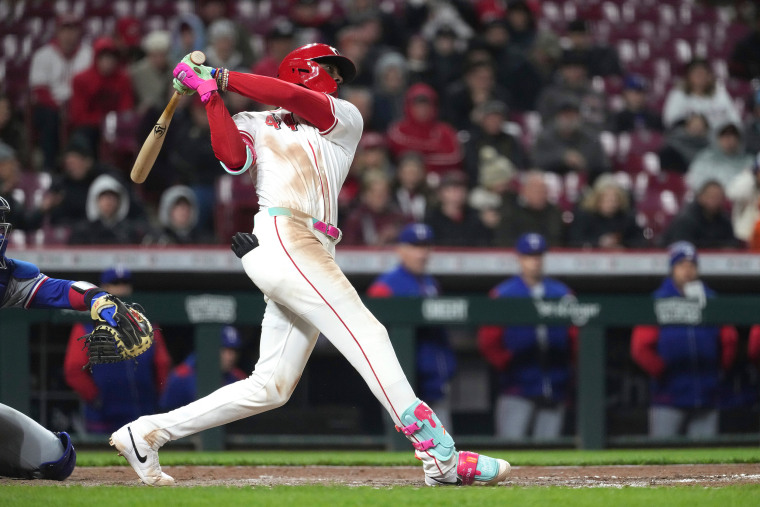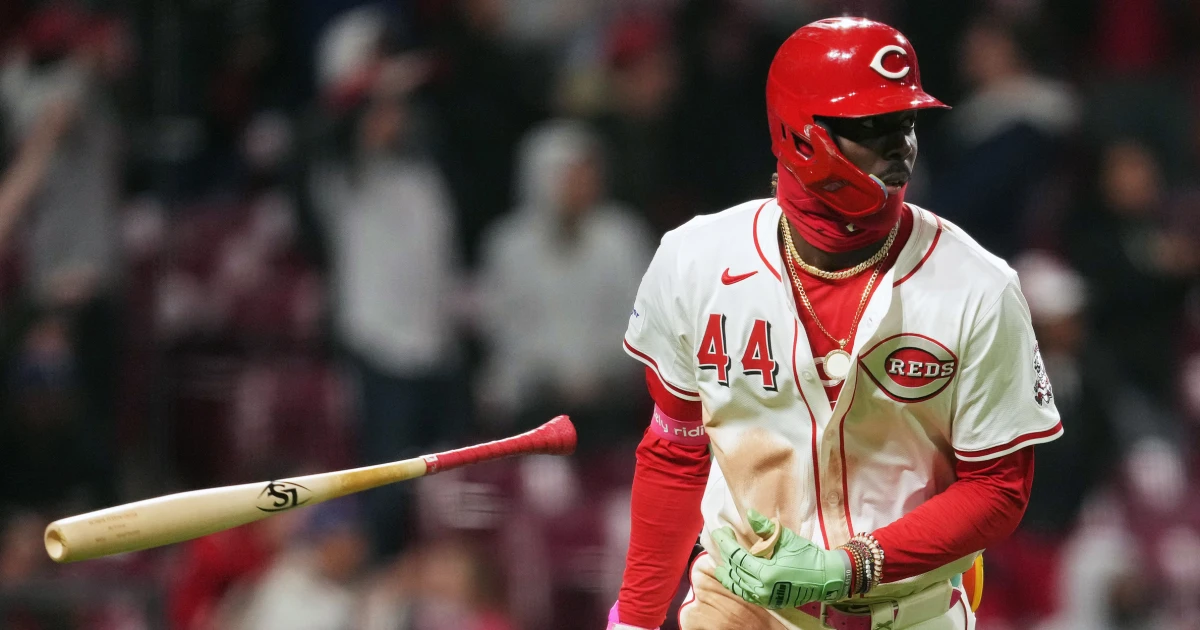By now, you’ve probably heard about baseball’s greatest innovation since the curveball: MLB’s new “torpedo” bat, the reconfigured bat that moves the barrel — or the sweet spot — closer to the handle, seemingly turning even the most meager of hitters into home run machines.
The New York Yankees famously made a splash with the bats on opening weekend, slugging 15 homers in their opening series against the Milwaukee Brewers, with several players taking the torpedo for a spin.
The Yankees aren’t alone, though. The Cincinnati Reds’ Elly De La Cruz, another torpedo adopter, hit two home runs and drove in seven runs Monday night in a 14-3 win against the Texas Rangers. Other teams that have been spotted with the new wood include the Chicago Cubs, the Baltimore Orioles, the Boston Red Sox, the Minnesota Twins, the Toronto Blue Jays and the New York Mets.
Does that mean offense is up MLB-wide? Can the average of runs per game exceed 5, which hasn’t happened since 2000?
The jury is still out on the real long-term effects of the relatively new bat style. There are a couple undeniable truths, however: The bats were used before this season, and they’re not a game-changer for every player.

Elly De La Cruz hits a two-run home run against the Rangers on Monday. Kareem Elgazzar / AP
First and foremost, in a sport known for players’ going to great lengths to find an advantage (ranging from absurd to harmful), the “torpedo” bat is almost boringly fair.
“These bats are legal, and they’re within the official bat rules and regulations,” an MLB official told NBC News.
Those rules and regulations include a maximum diameter of 2.61 inches but crucially don’t say where on the bat the maximum diameter has to be.
“There’s no regulation on geometry,” said the official, who asked not to be identified without being authorized to speak publicly. “And all torpedo bats aren’t shaped the same.”
Essentially, when teams are investing so much into the science and math of hitting and pitching, it was only a matter of time before bat shapes were tweaked to benefit specific players. Yankees shortstop Anthony Volpe is one of those players, after the team’s analytic department studied where on the bat he was most often making contact.
“Every hitter is going to have unique traits to their swing,” said Jason Ochart, the Red Sox’ director of hitting development and program design.
Ochart manages the hitting training for the franchise’s minor-league system.
“We have cameras that give biomechanics and backtracking, and we can look at where players are hitting the ball on the bat precisely,” Ochart said. “For a certain subset of hitters that tend to miss more toward the handle, it seems like a no-brainer to shift the sweet spot down to where they make more contact.”
Ochart said he has worked with hitters who’ve used the bat before, confirming it isn’t a new phenomenon for only this season. In fact, Yankees designated hitter Giancarlo Stanton used a type of torpedo bat last year, including in the playoffs, when he hit seven long balls in 14 games, though the taper of his bat wasn’t as severe as the one some of his teammates have used this season.
But “bat fitting,” as Ochart called it, is not a one-size-fits-all science. Take Stanton’s teammate outfielder Aaron Judge, who hit 58 homers last year and already has four in three games in 2025. Judge doesn’t use the bat and has indicated he won’t.
As far as trying to quantify the torpedo phenomenon, that’s going to take much more time. The incredibly early returns and irresponsibly small sample size of this season don’t scream offensive renaissance — the average runs per game is up by 0.04, and batting average is down 5 points.
“I feel like we need a full year of data to see how they play,” Twins shortstop Carlos Correa said, per The Minneapolis Star Tribune. He also added a potential downside to the lower barrels: “Cutters, sweepers, sliders, any pitch running away that you hit further down the bat, those are tougher to hit hard.”
Even users of the bat are unsure of its true effect.
“I think that’s still up for debate,” Twins catcher Ryan Jeffers told The Athletic about the bat’s usefulness. “I don’t think it’s going to be something that’s an end-all, be-all for everybody, that everybody’s going to start swinging these bats and become better hitters. I think this might work for some people and might not for others. For me, I’m giving it a little bit of a trial period [to] see how I like it.”
The excitement, however, that there’s a development that could help hitters in an era when innovation has largely benefited the pitcher is palpable.
“Do I think it’s going to revolutionize hitting? Probably not,” Ochart said. “Doing due diligence and testing this the best we can, I’m really excited about it and looking forward to digging in some more.”
